This is the multi-page printable view of this section. Click here to print.
Concepts
- 1: Transgene Expression
- 2: Split Expression
- 3: Templates
- 4: Bridging Registrations
- 5: Confidence Values
- 6: FlyLight Adult CNS Imaging Tiles
1 - Transgene Expression
Here we present details of how single transgenes are curated
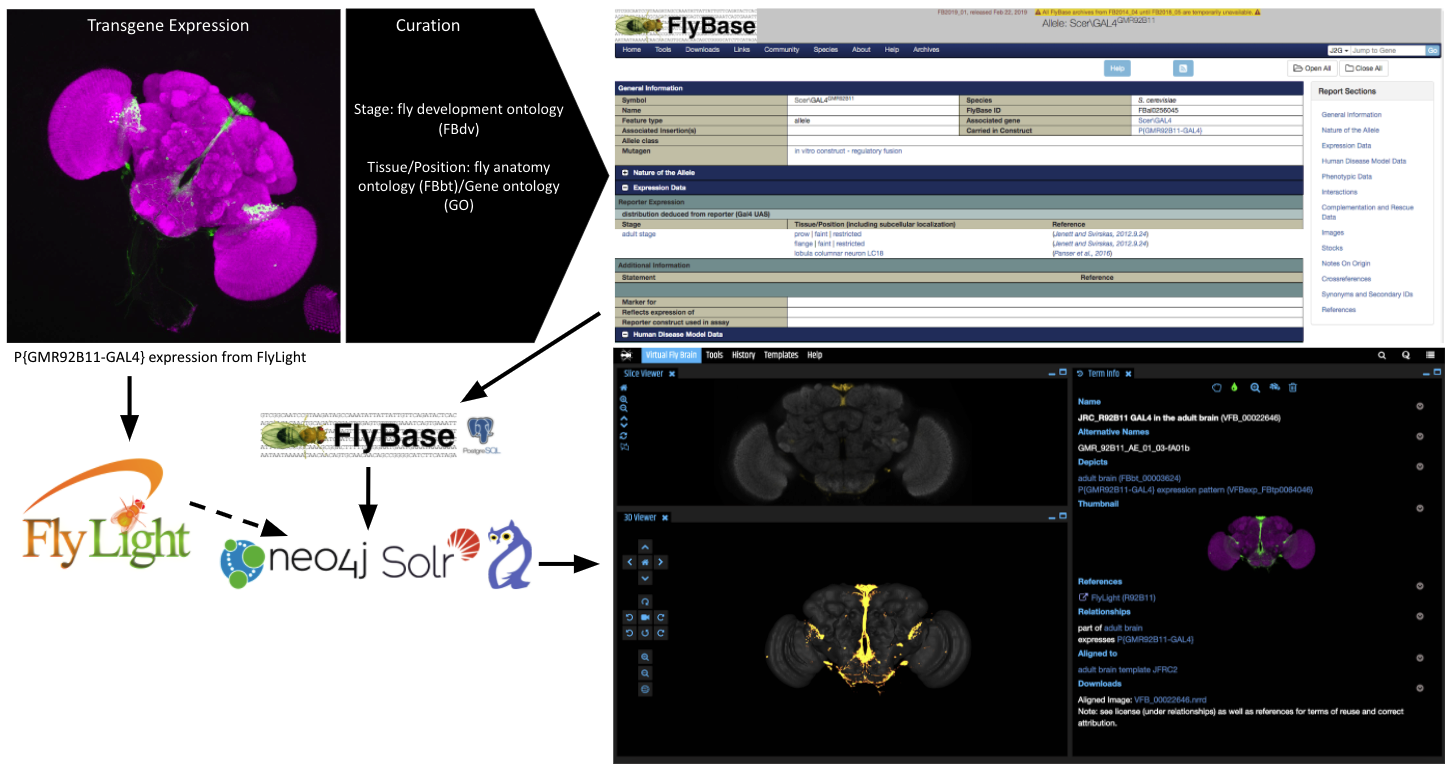
Expression of single transgenes are curated from the published literature into FlyBase as expression statements. Virtual Fly Brain (VFB) combines hosted images with neuroanatomical, expression and genetic data from FlyBase in Neo4j and maps them onto Central Nervious System (CNS) templates where they can be queried using Web Ontology Language (OWL) and Solr.
2 - Split Expression
Thousands of hemi-driver transgenes are now available, meaning that millions of combinations/splits are possible, each targeting some precise subset of the 10s-100s of thousands of neurons in a fly Central Nervous System (CNS). Finding the right combination for an experiment is a serious bottleneck for researchers.
FlyBase & Virtual Fly Brain (VFB) solve this problem by curating information and images recording where expression is driven by combinations of hemi-drivers. Each combination gets a standard name on VFB reflecting the names of the component hemidrivers (see figure below) and is also associated with any short names for the combination used in the literature (e.g. “P{VT017411-GAL4.DBD} ∩ P{VT019018-p65.AD} expression pattern” has_exact_synonym: SS02256")
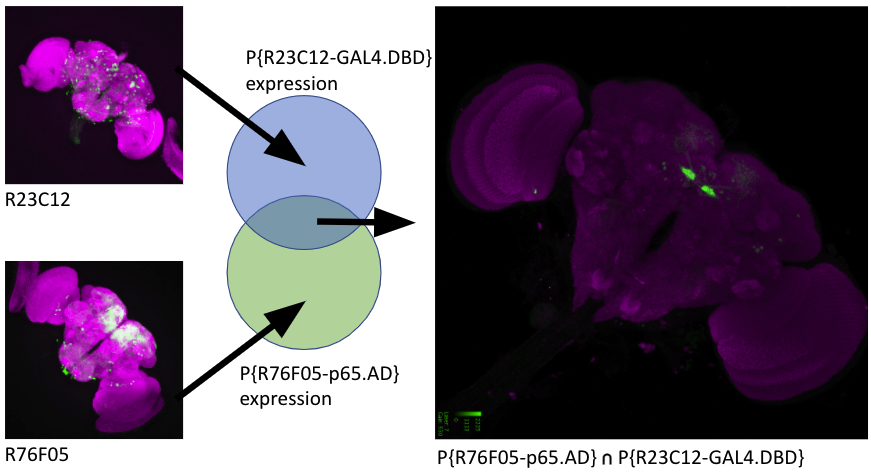
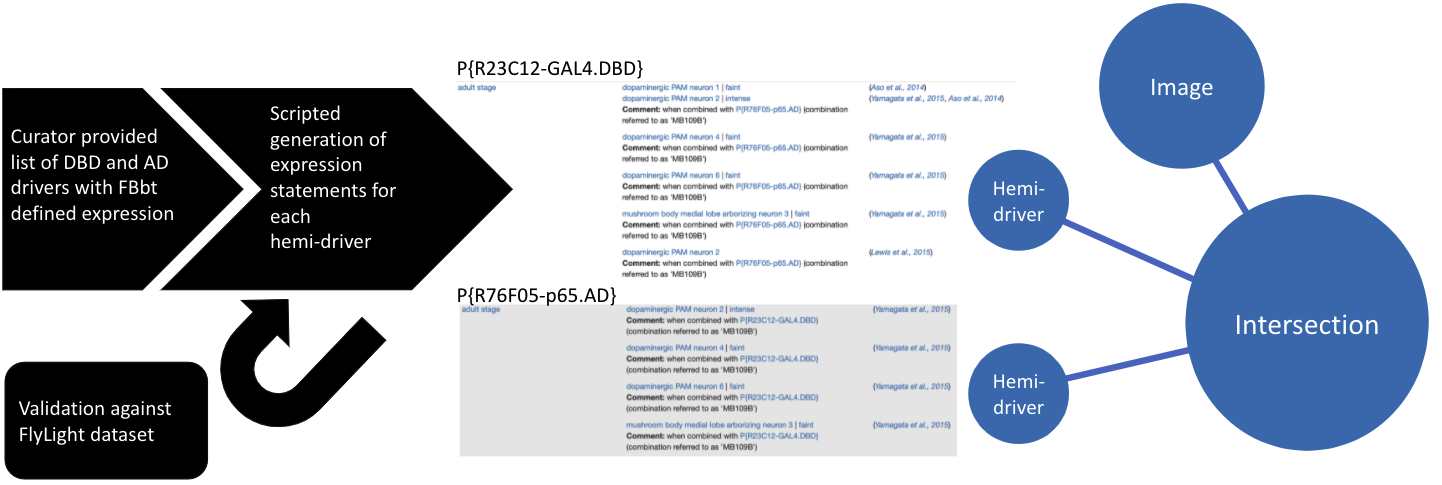
We use programmatic methods to generate expression statements for hemi-driver combinations with FlyLight image data hosted by VFB. Combinations are validated against a local copy of the FlyLight dataset and a structured user readable comment is generated as part of the expression statement. These hyperlink to the partner hemi-driver in FlyBase, contain the strain designation (where available) and can be automatically parsed by Virtual Fly Brain to attach expression and genetic data to a node representing the intersection.
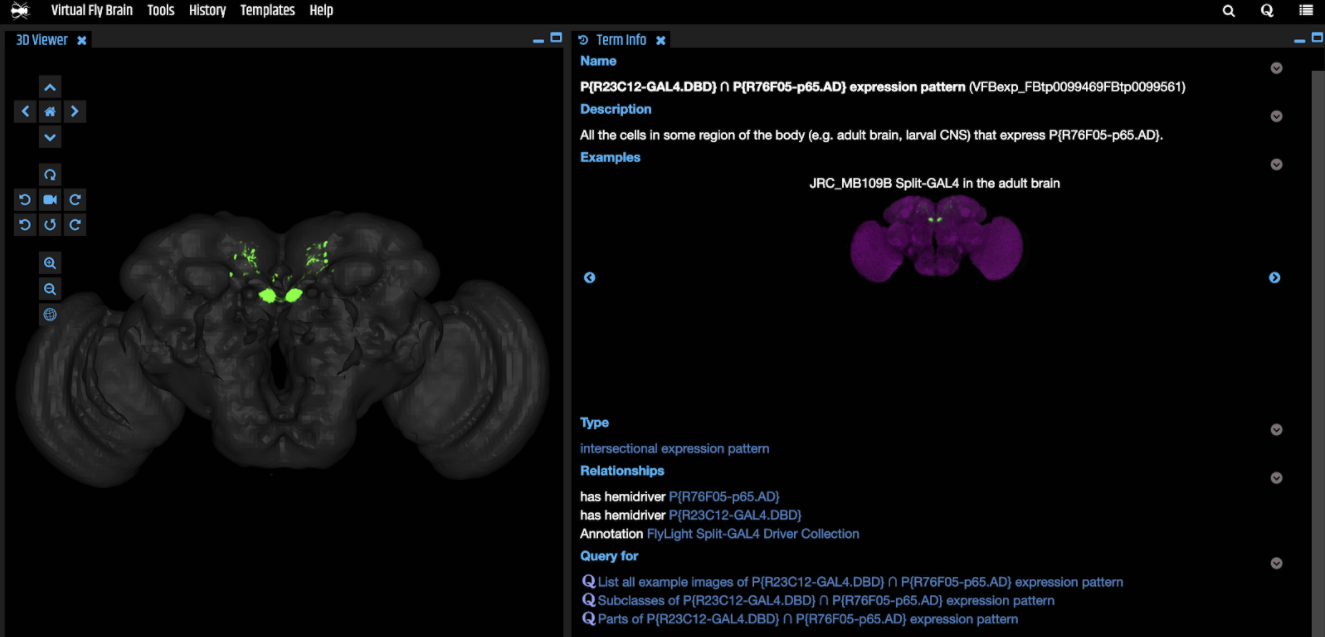
3 - Templates
Many central nervious system (CNS) templates exist for Drosophila, below we provide a summary of those used in VFB.
Central Nervious System from Janelia Research Campus JRC2018


VFB displays data aligned to either the JRC 2018 unisex brain template for cephalic or JRC 2018 unisex Ventral Nerve Cord (VNC) for non-cephalic data.
Bogovic et al., “An unbiased template of the Drosophila brain and ventral nerve cord”
We recomend downloading templates from the VFB browser or the links below however the original files are available from Janelia: JRC 2018 Brain templates
Adult Brain from Janelia Research Campus/VFB (JFRC2010/JFRC2)
Superceeded by JRC2018

Template brain created by Arnim Jenett (Janelia Research Campus), Kazunori Shinomiya and Kei Ito (Tokyo University) from a staining with the neuropil marker nc82.
The voxel size is 0.62x0.62x0.62 micron.
The files are available here.
Painted domains/regions in the available templates
4 - Bridging Registrations
Many transforms to map between different Drosophila template brains are available.
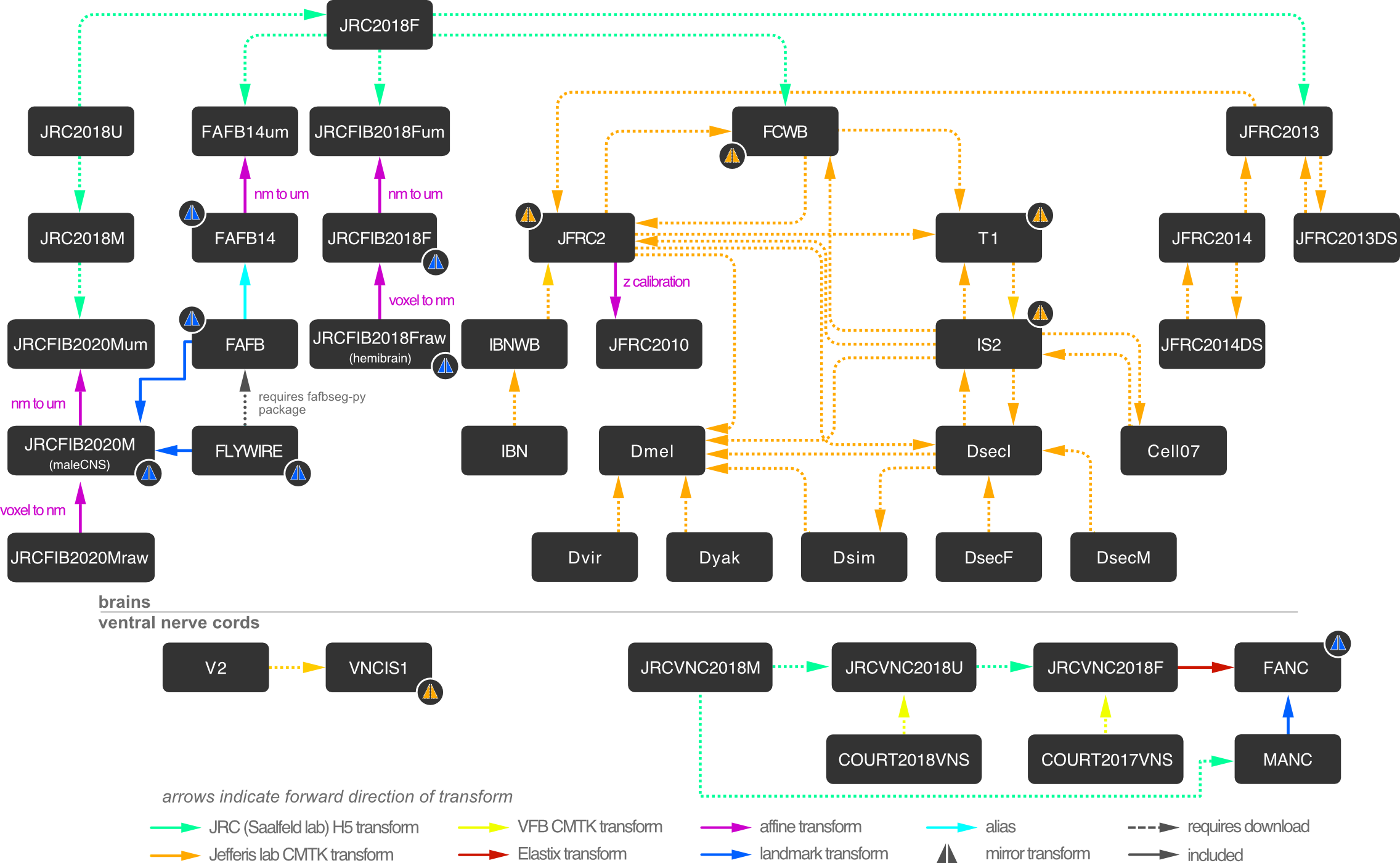
You can see how to use the above in python using navis-flybrains or in R using nat.flybrains
5 - Confidence Values
Some annotations on VFB are based on predictions, for example, predicted neurotransmitters for neurons in electron microscopy datasets (see below). Where available, we include the confidence of these predictions (as a badge next to the annotation), as well as a link to the publication - in the example below, this would be by clicking on the ‘DOI’ badge.

Neurotransmitter Prediction Confidence Values
Neurotransmitter predictions for neurons in the FlyWire FAFB and Hemibrain datasets are the ‘conf_nt’ predictions from Eckstein et al. (2024). MANC and optic-lobe predictions are from Takemura et al. (2023) and Nern et al. (2024), respectively, using the methodology of Eckstein et al. (2024). This analysis only investigated a limited set of neurotransmitters and assumed a single neurotransmitter per neuron (see publications for further detail). Neurons with fewer than 100 presynapses are excluded.
6 - FlyLight Adult CNS Imaging Tiles
While most first-generation FlyLight expression pattern images are single 20x objective acquisitions, many Split-GAL4 lines were imaged using 63x or 40x objectives. This requires multiple image acquisitions to cover the CNS regions of interest. VFB integrates only the combined images derived from these tiles and lists the tiles used to create these combined images in the comment section for each image, for example: “tile(s): ’left_dorsal, right_dorsal, ventral”. These tiles do not necessarily cover the entire brain or VNC, which complicates the assessment of the specificity of these lines. VFB notes in the comment where the combined tiles do not provide full coverage. For further information refer to Figure 4 Supplemental File 1 from ‘A split-GAL4 driver line resource for Drosophila CNS cell types’ direct link. This is a preprint and may be updated.
Sets of tiles from FlyLight (Meissner et al., 2024):




